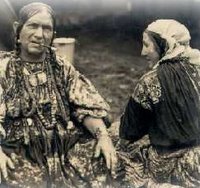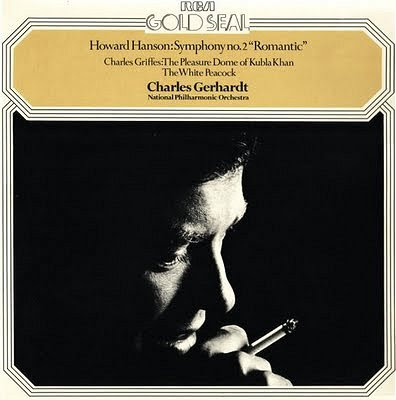Roma - the forgotten Holocaust victims

The fate of the millions of Jews murdered in Hitler's death camps is well documented, but less is known about the 500,000 Gypsies who also died. There are not many written accounts of the Roma or Sinti travellers who died in the camps, because, their culture is traditionally oral, not literary. By contrast the majority of the Jewish victims of the Holocaust came from educated middle-classes, and left behing written records of their terrible fate. The photograph above shows Roma prisoners in the Belzec concentration camp.
The genocide of the Roma by the Nazis is the most shocking example, but the history of the persecution of Gypsies goes back to their first appearance in Europe in the 15th century, when they were often confused with the hated Muslim invaders from the east. Laws were enacted against them across the whole continent, and centuries of persecution, forced assimilation, enslavement and extermination followed.
In England the last executions for the crime of being a Gypsy took place in East Anglia, close to where I write, in the 17th century - just a year before the birth of the great English composer Henry Purcell, and only twenty-seven years before the birth of that central figure
 of the Enlightenment, Johann Sebastian Bach. In 1658 thirteen Gypsies were tried and hanged by the Bury St Edmunds Assizes under the Vagrancy Acts introduced under the Tudor and Elizabethan monarchs to combat the 'gypsy problem'. The East Anglian based Romany Theatre Company has created the drama Killimengro (which means 'dancer' in the English Romani language) based on the true story of the 1658 executions.
of the Enlightenment, Johann Sebastian Bach. In 1658 thirteen Gypsies were tried and hanged by the Bury St Edmunds Assizes under the Vagrancy Acts introduced under the Tudor and Elizabethan monarchs to combat the 'gypsy problem'. The East Anglian based Romany Theatre Company has created the drama Killimengro (which means 'dancer' in the English Romani language) based on the true story of the 1658 executions.The Romany Theatre Company is rooted in the Romany people, their culture and their centuries-old struggle for equality, and the Company's work is committed to challenging the negative views of Romany people and the lives they lead. The Company also empowers young Romany people by allowing them to celebrate their identity and culture through theatre and performance. Author of Killimengro and the artistic director of the company, Dan Allum, is himself a Romany Gypsy who had no formal education. He taught himself to read and write at 16 and went on to become an award-wining author of plays, screenplays and short stories
The powerful performance of Killimengro we saw on Friday at The Cut performing arts centre in Halesworth featured players from Budapest, Seville and East Anglia. The drama uses a flameco guitarist and dancer as a Greek chorus to comment on the action. The guitarist at the performance we attended was the renown Flamenco exponent Steve Homes who learnt his technique from the gypsies around St Maries de la Mer in the Carmargue. Here is a short MP3 download from his album Secret Garden -
Killimengro is multi-lingual, using English, Romani, Hungarian and Slovakian. The Romani language is of Indian origin, and is the only Indo-Aryan Language than has been spoken exclusively in Europe since the Middle
 Ages. It is assumed that the ancestors of the Roma migrated from India to Europe and settled in Byzantine sometime before the 10th century. During this period the language absorbed many Greek influences in grammar and vocabulary, which are still recognisable today.
Ages. It is assumed that the ancestors of the Roma migrated from India to Europe and settled in Byzantine sometime before the 10th century. During this period the language absorbed many Greek influences in grammar and vocabulary, which are still recognisable today.From the 14th century onwards, Romani-speaking populations migrated outwards from the Balkans, reaching northern and western Europe in the 15th century. Various groups migrated into Britain via France, Germany and Scandinavia from the early 16th century. Gypsy communities in countries such as England, Wales, Spain, Portugal and Sweden have given up their language to use the majority language of the surrounding population. However, these communities have often retained a Romani vocabulary, which they use as an in-group secret language. This uses words derived from Romani but adapted using the sound system and grammatical inflections of the native language. Here in England Anglorami is the linguistic term used to describe the para-Romani spoken by Gypsies.
Romani resources:
* Manchester University Romani project with audio files of Romani dialects
* Romani lexical database from University of Graz
* English Romani dictionary
* Future performances of Killimengro - this is an important piece of theatre, I urge you to see it. And I would encourage the many US arts organisations that read this blog to explore ways of bringing it to the audience it deserves across the Atlantic.
Now playing - Bela Bartók's Roumanian Dances with Antal Dorati conducting the Minneapolis Symphony on vinyl LP (SRI75105) in glorious Mercury sound in those wonderful days before the wonders of digital encoding, and before the benefits of multi-tracked and multi-miked recordings . The seven movement dance suite was originally written for piano, and uses tunes transcribed by Bartók from Gypsies in Máramaros in Northern Transylvania.
 The photo to the right shows Bartók (in black hat) travelling to research Gypsy folk music, complete with Edison phonograph. Like the Roma Antal Dorati was forced to migrate by political forces. Born in Budapest, he worked in Dresden before he moved first to Monte Carlo, and then to the US where he recorded this wonderful album with the Minneapolis Symphony, whose music director he was for eleven years.
The photo to the right shows Bartók (in black hat) travelling to research Gypsy folk music, complete with Edison phonograph. Like the Roma Antal Dorati was forced to migrate by political forces. Born in Budapest, he worked in Dresden before he moved first to Monte Carlo, and then to the US where he recorded this wonderful album with the Minneapolis Symphony, whose music director he was for eleven years.Image credits - Belzec from Sinti and Roma teaching resources: Gypsy children from Amber Online: Gypsy women from University of North Texas: Bartók from Good-music-guide.com. Any copyrighted material on these pages is included as "fair use", for the purpose of study, review or critical analysis only, and will be removed at the request of copyright owner(s). Report broken links, missing images and other errors to - overgrownpath at hotmail dot co dot uk
If you enjoyed this post take An Overgrown Path to Holocaust opera's rare performance









Comments
I had occasion to write to The Guardian last year over their use of the term 'pikey' (used, as so often, as a synonym for rubbishy or sub-standard, which I find twice as offensive).
The journo in question wrote back to say she had a bet with her friends to see how many racist terms she could sneak past the editor ... well, how amusing.